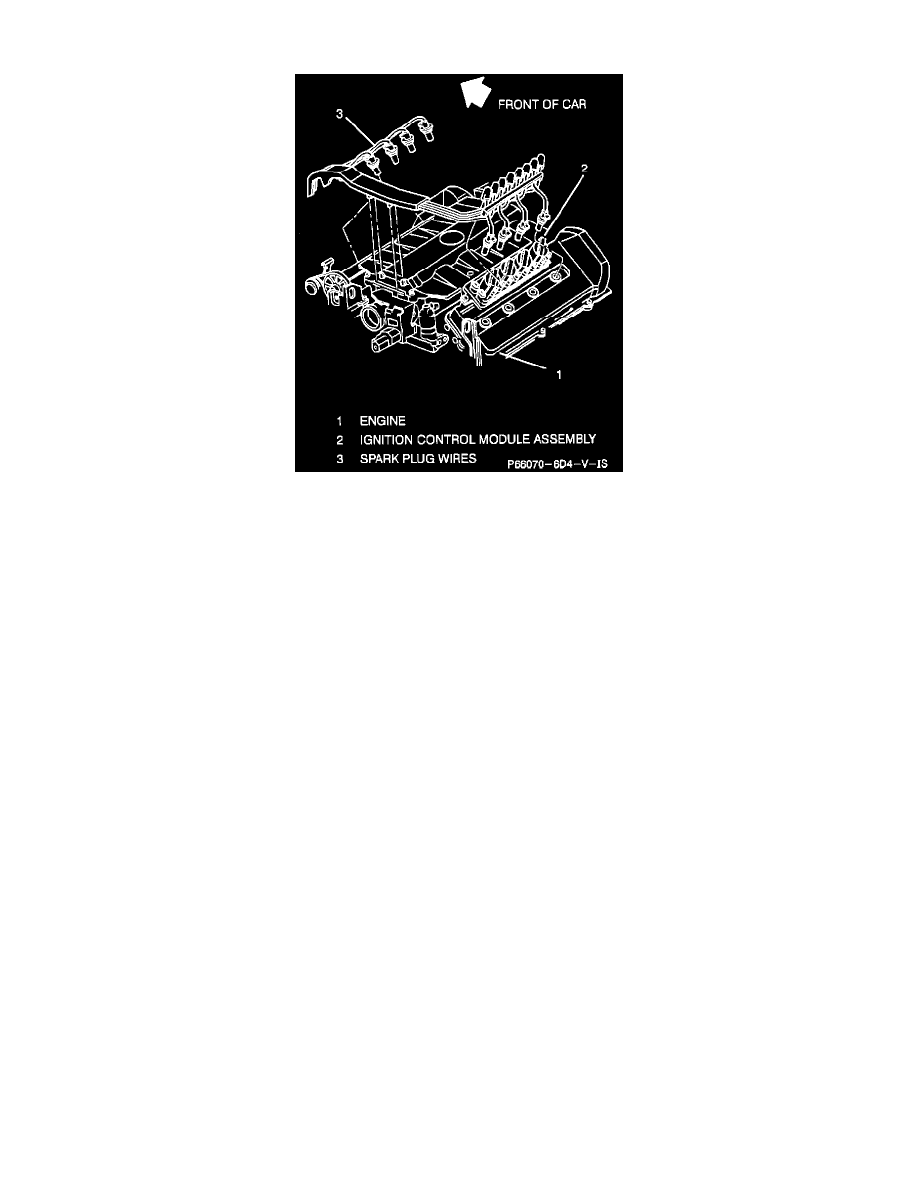DeVille V8-4.6L VIN 9 (1995)

Spark Plug: Description and Operation
Spark Plug Wire Replacement
DESCRIPTION
Eight spark plugs are centrally located in each cylinder combustion chamber and can be accessed through holes at the top of both cylinder bank
camshaft covers. The spark plugs have platinum pads welded to the electrodes. These pads extend the spark plug life to 160,000 kilometers
(100,000 miles). Worn, cracked or dirty plugs may give satisfactory operation at idling speed, but under operating conditions they frequently fail.
Faulty plugs are indicated in a number of ways: poor fuel economy, power loss, loss of speed, hesitation, shudder, medium throttle intake manifold
backfire, hard starting and general poor engine performance.
CONSTRUCTION
The spark plugs are have a "ribless" porcelain insulator. This "ribless" insulator and boot design provide a better plug-to-hoot retention. The
41-929 spark plug and boot design significantly reduces carbon tracking and reduces engine misfire.
DIAGNOSTIC NOTES:
Fouled plugs - may be indicated by black carbon deposits. The black deposits are usually the result of slow speed driving and short runs where
sufficient engine operating temperature is seldom reached. Worn pistons, rings, faulty ignition, overrich fuel mixture or cold spark plugs may
result in carbon deposits.
Excessive gap wear - on plugs of low mileage, usually indicates the engine is operating at high speeds or loads that are consistently greater than
normal or that a plug which is too hot is being used. Electrode wear may also be the result of plug overheating, caused by combustion gases
leaking past the threads, due to insufficient torquing of the spark plug. Excessively lean fuel mixture will also result in excessive electrode wear.
Broken insulators - are usually the result of improper installation or carelessness when regapping the plug. Broken upper insulators usually result
from a poor fitting wrench or an outside blow. The cracked insulator may not show up right away, but will as soon as oil or moisture penetrates the
crack. The crack is usually just below the crimped part of shell and may not be visible.
Broken lower insulators - usually result from carelessness when regapping and generally are visible. This type of break may result from the plug
operating too "Hot", which may happen in periods of high speed operation or under heavy loads, When regapping a spark plug, always make the
gap adjustment by bending the ground (side) electrode. Spark plugs with broken insulators should always be replaced.
Spark plug boots - cover the spark plug terminal and a portion of the plug insulator. These boots prevent flash-over which causes engine
misfiring. Do not mistake corona discharge for flash-over or a shorted insulator. Corona is a steady blue light appearing around the insulator, just
above the shell crimp. It is the visible evidence of high-tension field and has no effect on ignition performance. Usually it can be dust particles
leaving a clear ring on the insulator just above the shell. This ring is sometimes mistakenly regarded as evidence that combustion gases have blown
out between shell and insulator.
